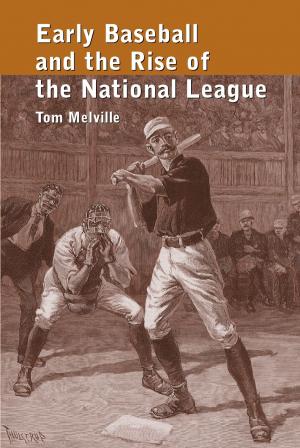Animation Under the Swastika
A History of Trickfilm in Nazi Germany, 1933-1945
Nonfiction, Entertainment, Performing Arts, Film| Author: | Rolf Giesen, J.P. Storm | ISBN: | 9780786489695 |
| Publisher: | McFarland & Company, Inc., Publishers | Publication: | August 2, 2012 |
| Imprint: | Language: | English |
| Author: | Rolf Giesen, J.P. Storm |
| ISBN: | 9780786489695 |
| Publisher: | McFarland & Company, Inc., Publishers |
| Publication: | August 2, 2012 |
| Imprint: | |
| Language: | English |
Among their many idiosyncrasies, Adolf Hitler and Joseph Goebbels, the Nazi minister of propaganda, remained serious cartoon aficionados throughout their lives. They adored animation and their influence on German animation after World War II continues to this day. This study explores Hitler and Goebbels’ efforts to establish a German cartoon industry to rival Walt Disney’s and their love-hate relationship with American producers, whose films they studied behind locked doors. Despite their ambitious dream, all that remains of their efforts are a few cartoon shorts—advertising and puppet films starring dogs, cats, birds, hedgehogs, insects, Teutonic dwarves, and other fairy-tale ensemble. While these pieces do not hold much propaganda value, they perfectly illustrate Hannah Arendt’s controversial description of those who perpetrated the Holocaust: the banality of evil.
Among their many idiosyncrasies, Adolf Hitler and Joseph Goebbels, the Nazi minister of propaganda, remained serious cartoon aficionados throughout their lives. They adored animation and their influence on German animation after World War II continues to this day. This study explores Hitler and Goebbels’ efforts to establish a German cartoon industry to rival Walt Disney’s and their love-hate relationship with American producers, whose films they studied behind locked doors. Despite their ambitious dream, all that remains of their efforts are a few cartoon shorts—advertising and puppet films starring dogs, cats, birds, hedgehogs, insects, Teutonic dwarves, and other fairy-tale ensemble. While these pieces do not hold much propaganda value, they perfectly illustrate Hannah Arendt’s controversial description of those who perpetrated the Holocaust: the banality of evil.















